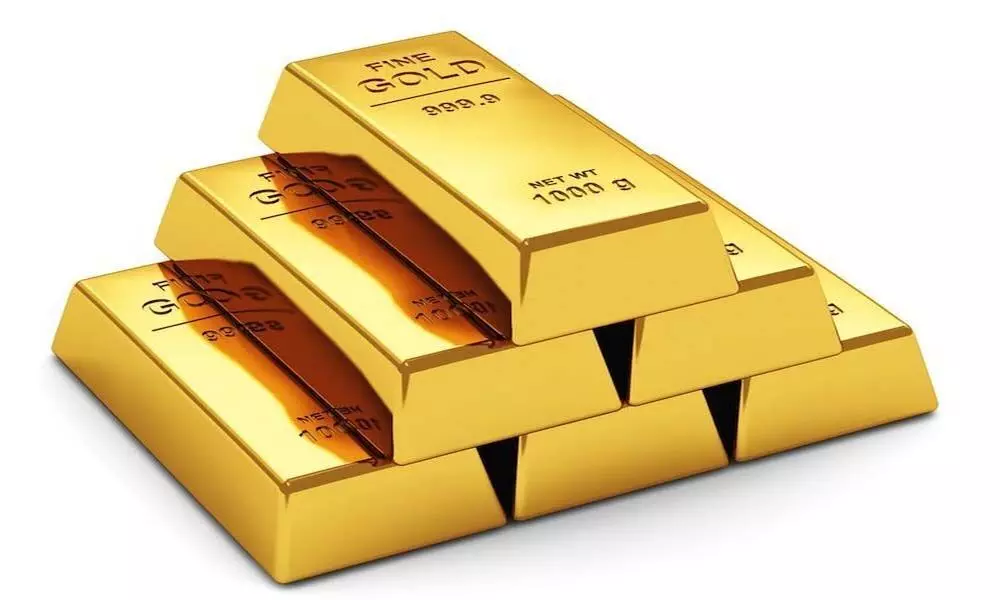As millennials shun gold, WGC looks elsewhere
Global gold body to promote yellow metal as investment bet
image for illustrative purpose

Even as millennials are fast losing their interest in gold, World Gold Council (WGC) wants to promote the yellow metal as an investment category.
According to Colin Shah, Chairman, GJEPC, "today's generation of people has lost touch with gold, unlike their earlier generation. I mean millennials have lost touch with gold."
The industry is faced with several challenges - transition to becoming more organised and enhancing trust, high prices and lockdowns affecting consumer propensity to buy and above all, competition from other categories of investments and spends that have captured the fancy of Gen Z such as electronics and experiences such as travel. In this scenario, it is important to connect with millennials with a distinctive marketing campaign that positions our gold tradition in a modern context.
Nearly 60 per cent of jewellery demand is estimated to be linked to weddings, which is an important event in one's life and gold, rightly so, has brightened this occasion for many centuries and will do so – yet there are many other occasions today a millennial celebrates in his or her own right – and gold has a place in it too. That is what this campaign intends to do. It is about building awareness of how gold is relevant to the emotions in modern lives. It is about value of gold, not price.
"Hopefully, this should resonate with gold buyers as market opens up and pent-up demand is released during the festive season ahead, creating a huge impact on the industry's fortunes. India is home to the best handcrafted Jewellery, yet at the point of sale, many a time, gold is commoditised and this should change if the fortunes of artisans who have carried these skills have to become better. It is time that industry joins up in supporting various category level marketing campaigns for the next few years for common benefit. This could perhaps be a good beginning," said Somasundaram PR, Regional CEO, India, World Gold Council while talking to Bizz Buzz.
It is why WGC has tied up with Gem and Jewellery Export Promotion Council (GJEPC) so as to promote gold jewellery through a multi-media campaign.
This campaign is intended as a generic gold campaign to raise the category salience. Our consumer survey across global retail gold markets highlighted a few opportunities and a few challenges. Millennials' approach towards gold Jewellery was indifferent due to absence of trust and a surge in experiential alternatives, which poses a risk for the long-term category growth for gold, he said.
The positive development in recent years has been the adoption with a high degree of compliance of several tax and transparency measures by the industry. GST, PAN Card for sale above Rs 2 lakh, KYC, responsible sourcing, India good delivery standard and now mandatory hallmarking have all become part of the trade practices.
As a large segment of the industry is small and unorganized, this has not been an easy journey and there have been some initial downsides but the transformation, led by the industry associations and organised players, is no longer reversible.
Gold is, Somasundaram said, a serious financial saving, whether in the form of jewellery, bars and coins, ETFs or digital holdings and therefore, if it has to integrate with the mainstream financial channels for growth and transparency, it is only natural regulations evolve over time to make gold on par with any other financial saving. Though government did fix special slab of 3 per cent GST for gold, overall taxes however sill remain almost punitive at 14.19 per cent, acting as a deterrent to 100 per cent trade compliance across all parts of the supply chain, unlike financial instruments.
Demand has been soft since demonetization and the sharp rise in prices since 2019, almost by 60 per cent to Rs 55,000 / 10g took it out of reach of many households, for whom this is the first form of saving. The year 2020 has been a punishing year in many respects with lockdowns and labour migration and this too has hit the smaller players and consumers at the lower part of the pyramid hard. Though organised players managed to get their digital act and attract consumers, the market is still far from its peak, he said.
Gold demand was in the range of 800-900 tonnes for many years in the country, and it has come down to 600 – 700 tonnes in the last few years, beginning with demonetisation and followed by other broader transparency measures in the economy.
Given the economic growth trajectory and low per capita consumption yet, demand will rise with prosperity and reach levels seen earlier. Underpinned by market reforms that should enhance trust, gold category marketing has to change the focus of communication from traditional areas of concern such as purity and price to new areas of opportunity, Somasundaram hoped.

